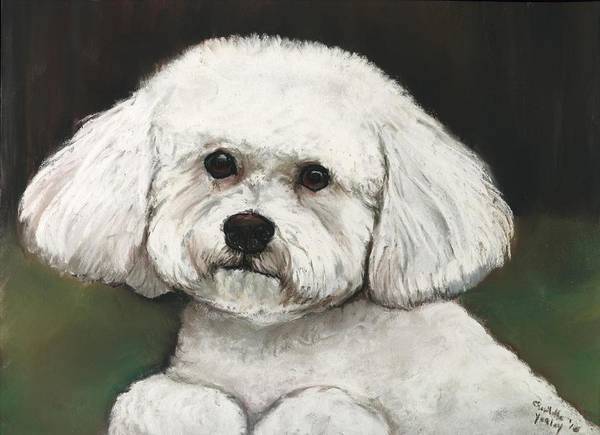
The first litter of Bichon Frise puppies born in the United States happened in 1956 after Helene and Francois Picault immigrated to this country, and their second Bichon, a bitch named Etoile de Steren Vor, went into whelp. By that time, the breed’s name was established, but it wasn’t always so. Only twenty-three years earlier, the breed was known by two names, Tenerife and Bichon, Tenerife being a nod to the largest of the Canary Islands, Tenerife, where much of the modern development of the breed occurred. The “bichon” part of the name is a bit trickier. “Bichon” is thought to be a contraction of “barbichon,” the diminutive form of “barbet” which comes from the French word for “beard.” “Frise” is also French for “curly.” Additionally, there is historically anecdotal evidence that pampering a Bichon Frise became such a fad in France during the time of King Henry III that it begat the French verb, “bichonner,” meaning to make beautiful, or to pamper.
Think that settles it?
Some word smiths will tell you that bichon comes from the Middle French word for a small long-haired dog, or from the diminutive of Old French biche (“bitch, female dog”). Others maintain that it’s actually derived from the Old English word, bicce (“bitch, female dog”). It’s also related to the Old Norse bikkja (“female dog”) and German Betze (“female dog”).
In the end, it was the President of the International Canine Federation, Mme. Nizet de Lemma, who proposed the breed’s name based on breed characteristics, and the name, Bichon a Polio Frise (Bichon with the curly coat) was adopted. The anglicized version is Bichon Frise, or curly lap dog.
Image: Bichon Frise by Charlotte Yealey
http://www.charlotteyealey.com

So is the bichon a Spanish breed then? Why did the French change the name and take ownership?